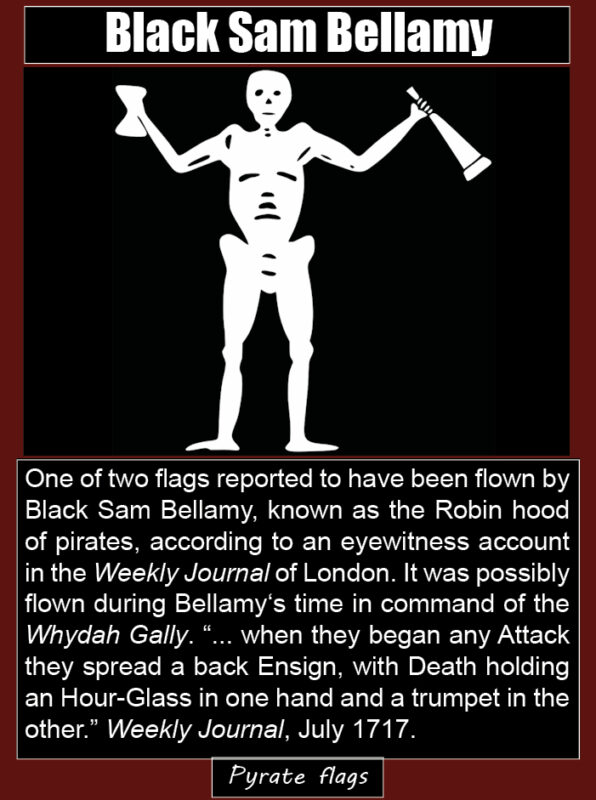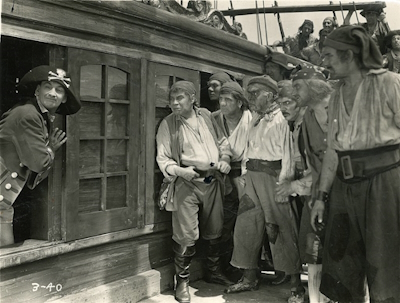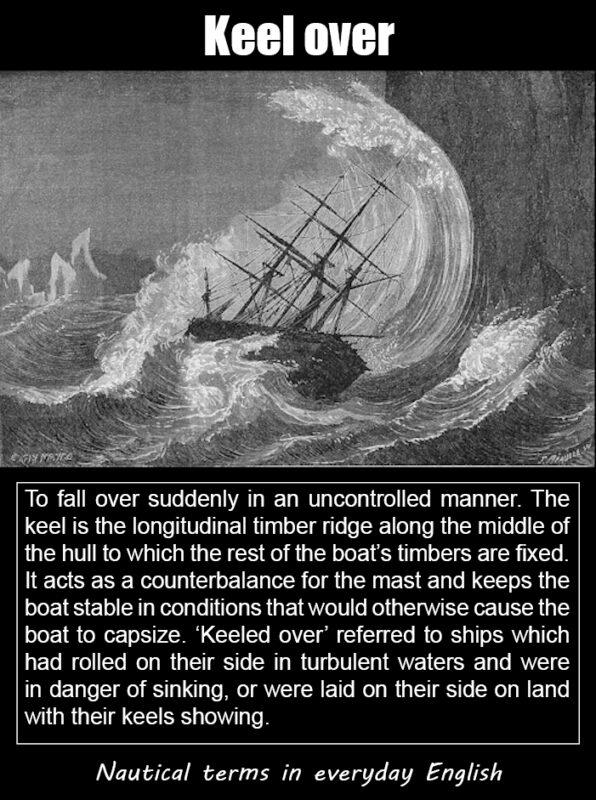“They vilify us, the scoundrels do, when there is only this difference, they rob the poor under the cover of law, forsooth, and we plunder the rich under the protection of our own courage.” speech attributed to Samuel Bellamy in Captain Johnson’s A History of the Pyrates
 Much admired by some, Samuel Bellamy was sometimes referred to as the Robin Hood of the sea, although there is no evidence of him giving to the poor as did the mythic hero of Sherwood Forest. Bellamy is viewed as one of the most successful pirates of his time, although his pirating career lasted little over a year. He is said to have treated captives well in comparison to many of his contemporaries, but was not averse to forcing men to serve in his crew, especially carpenters. He was apparently called Black Sam because he didn’t want to wear a wig, preferring his long black hair to flow free.…
Much admired by some, Samuel Bellamy was sometimes referred to as the Robin Hood of the sea, although there is no evidence of him giving to the poor as did the mythic hero of Sherwood Forest. Bellamy is viewed as one of the most successful pirates of his time, although his pirating career lasted little over a year. He is said to have treated captives well in comparison to many of his contemporaries, but was not averse to forcing men to serve in his crew, especially carpenters. He was apparently called Black Sam because he didn’t want to wear a wig, preferring his long black hair to flow free.…


 The popular images in film and literature of what pirates wore does not generally correspond to the reality of the period, and is usually based more on 19th century depictions. Howard Pyle drew many interpretations taken from a combination of contemporary South American dress and what 19th century seamen wore. Not a great deal is known about what pirates actually did wear as no pirates were directly painted by artists, but we can assume that most pirate crews were probably indistinguishable from other seamen of the time. Sailors clothes were known as slops and were cheap, baggy, and durable. Uniforms weren’t introduced until 1857. Jackets and trousers were often painted with pine tar to make them water resistant, giving sailors the name tars. Clothing was a much sought after and pirates would often steal it when a ship taken, so they usually wore the clothes of ordinary sailors supplemented by those stolen from more well-off victims, which were often auctioned off at the mast.…
The popular images in film and literature of what pirates wore does not generally correspond to the reality of the period, and is usually based more on 19th century depictions. Howard Pyle drew many interpretations taken from a combination of contemporary South American dress and what 19th century seamen wore. Not a great deal is known about what pirates actually did wear as no pirates were directly painted by artists, but we can assume that most pirate crews were probably indistinguishable from other seamen of the time. Sailors clothes were known as slops and were cheap, baggy, and durable. Uniforms weren’t introduced until 1857. Jackets and trousers were often painted with pine tar to make them water resistant, giving sailors the name tars. Clothing was a much sought after and pirates would often steal it when a ship taken, so they usually wore the clothes of ordinary sailors supplemented by those stolen from more well-off victims, which were often auctioned off at the mast.…
 Much admired by some, Samuel Bellamy was sometimes referred to as the Robin Hood of the sea, although there is no evidence of him giving to the poor as did the mythic hero of Sherwood Forest. Bellamy is viewed as one of the most successful pirates of his time, although his pirating career lasted little over a year. He is said to have treated captives well in comparison to many of his contemporaries, but was not averse to forcing men to serve in his crew, especially carpenters. He was apparently called Black Sam because he didn’t want to wear a wig, preferring his long black hair to flow free.…
Much admired by some, Samuel Bellamy was sometimes referred to as the Robin Hood of the sea, although there is no evidence of him giving to the poor as did the mythic hero of Sherwood Forest. Bellamy is viewed as one of the most successful pirates of his time, although his pirating career lasted little over a year. He is said to have treated captives well in comparison to many of his contemporaries, but was not averse to forcing men to serve in his crew, especially carpenters. He was apparently called Black Sam because he didn’t want to wear a wig, preferring his long black hair to flow free.…